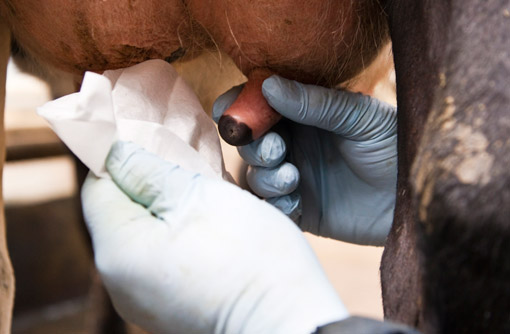Make sure teat liner size correct

Teat health can be severely affected by several milking machine factors. Ian Ohnstad from the Dairy Group takes us through the key areas for consideration
There are a number of milking machine factors that can affect post milking teat condition including the fit of the liner to the teats, the type of liner (shape and material), the working vacuum level, the degree of over-milking and the pulsation settings. All of these factors are closely related and invariably optimising teat health is a compromise between milking quickly, gently and completely.
Liner dimensions play a critical role in determining the range of teat sizes that can be effectively milked and massaged. Any specific liner and liners that maximise milking speed are likely to increase the risk of teat congestion and teat-end hyperkeratosis.
Liner dimensions
Teats are able to adapt to different liner dimensions while liners have much less ability to adapt to different teat sizes. As there will always be a range of teat size and shape in a herd, the best liner for any herd is the liner that will perform well over the widest range of teat sizes.
In order for the liner to apply compression to the bottom 25mm of the teat and reduce congestion, the teat end must be positioned in the part of the liner that is able to collapse and provide this compression. Teats increase in length by around 40% from their resting length to their milked length when milked in a narrow bore liner.
To apply compression to the lower 25mm of the teat, a liner with a mouthpiece depth of 30mm will apply full compression to teats that are longer than about 39mm in their resting state (minimum teat length = (mouthpiece depth (mm) + 25mm)/1.4).
There has recently been a general trend towards breeding for short teats and it is not uncommon to see heifers with teats less than 30mm long. When the teat does not protrude into the liner barrel beyond the mouthpiece, no compression will be applied to the teat. This explains the high levels of discolouration and oedema noted on heifers’ teats after milking.
In addition to the problems generated by insufficient liner compression, these short teats will also be milked with high mouthpiece vacuum, as the teat is not long enough to create a seal in the liner barrel. This will lead to ringing at the base of the teat and congestion and oedema, which will manifest itself as intense red and blue colouring of skin at the base of the teat.
The diameter of the teat compared to the liner barrel also plays a role in the liner mouthpiece vacuum during milking. Teats can stretch in both directions: they can get “fatter” and “longer”. However, the total volume of the teat in the liner is relatively constant. If teats get “fatter” they cannot become longer. Wide bore liners, where the liner bore diameter is greater than the teat diameter, will cause a teat to get fatter and reduce the ability of the teat to elongate into the zone of effective compression. This decreases the minimum teat length that can be effectively massaged during milking. This has led to a general recommendation that liners should be selected that have a barrel diameter 1mm less than the average teat width in the herd.
Identifying incorrect liner dimension
The first step is to examine the teats after milking. Examining a cross section of teats in the herd (20% of the herd or a minimum of 80 cows) taking account of stage of lactation and parity will provide a valuable insight.
Less than 5% of teats examined should exhibit signs of discolouration (red or blue hue) while less than 10% of teats should be showing signs of a palpable ring around the base of the teat. It is important that animals across all stages of lactation are examined as only scoring a group of fresh calved heifers will invariably result in a misdiagnosis.
Teats when handled after milking should feel soft and teats exhibiting signs of hardness are another indicator that the liner is not fitted correctly to the teat.
Take home messages
- Inappropriate liner selection can lead to teat congestion and oedema
- Congested, discoloured teats are not only a result of incorrect liner choice
- Plant vacuum level, ACR settings and milking routine can all have a significant effect
- Before rushing into a change of milking liner, it is important to ensure these other factors have been checked and addressed.
More online
Register online to get your free copy of Dairy Update delivered direct to your inbox
